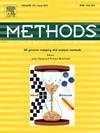A high-throughput and time-efficient Nanopore full-length 16S rRNA gene sequencing protocol for synthetic microbial communities
IF 4.3
3区 生物学
Q1 BIOCHEMICAL RESEARCH METHODS
引用次数: 0
Abstract
Next-generation sequencing (NGS) has transitioned from primarily research-focused applications to a mature technology. However, resolving microbial community composition on the species level based on the 16S rRNA gene is impeded by several critical bottlenecks that limit the efficiency and scalability of analyses. Specifically, standard MiSeq sequencing suffers from read-length limitation; library preparation requires multiple labour-intensive steps from DNA isolation to amplification and barcoding; and prolonged turnaround times delay results. These challenges underscore the need for improved methods, which our study aims to address. Recent advances in Oxford Nanopore long-read sequencing technology (ONT), including a smaller and cheaper benchtop instrument and support for diverse sample types, have enabled faster sequencing in-house with reduced costs. To address the need for standardized, reproducible workflows, we present an optimized and state-of-the-art protocol for full-length 16S rRNA gene sequencing using the ONT MinION sequencing device. Furthermore, we quantified the reproducibility and accuracy of our protocol and compared it with previous MiSeq results. The results showed that the accuracy of our sequencing pipeline for synthetic communities is significantly higher than for MiSeq pipeline. In summary, our protocol elucidates the composition of synthetic microbial communities in an easy, fast and accurate manner while ensuring reproducible results.
用于合成微生物群落的高通量、高时效 Nanopore 全长 16S rRNA 基因测序方案
新一代测序(NGS)已经从主要的研究应用过渡到成熟的技术。然而,基于16S rRNA基因在物种水平上解析微生物群落组成受到几个关键瓶颈的阻碍,这些瓶颈限制了分析的效率和可扩展性。具体来说,标准的MiSeq测序存在读长限制;文库准备需要从DNA分离到扩增和条形码的多个劳动密集型步骤;而长时间的周转时间会延迟结果。这些挑战强调了改进方法的必要性,我们的研究旨在解决这一问题。牛津纳米孔长读测序技术(ONT)的最新进展,包括更小、更便宜的台式仪器和对多种样品类型的支持,使内部测序速度更快,成本更低。为了满足标准化、可重复工作流程的需求,我们提出了一种优化的、最先进的方案,用于使用ONT MinION测序设备进行全长16S rRNA基因测序。此外,我们量化了我们的方案的再现性和准确性,并将其与以前的MiSeq结果进行了比较。结果表明,我们的合成群落测序管道的准确性明显高于MiSeq管道。总之,我们的方案阐明了合成微生物群落的组成简单,快速和准确的方式,同时确保可重复性的结果。
本文章由计算机程序翻译,如有差异,请以英文原文为准。
求助全文
约1分钟内获得全文
求助全文
来源期刊

Methods
生物-生化研究方法
CiteScore
9.80
自引率
2.10%
发文量
222
审稿时长
11.3 weeks
期刊介绍:
Methods focuses on rapidly developing techniques in the experimental biological and medical sciences.
Each topical issue, organized by a guest editor who is an expert in the area covered, consists solely of invited quality articles by specialist authors, many of them reviews. Issues are devoted to specific technical approaches with emphasis on clear detailed descriptions of protocols that allow them to be reproduced easily. The background information provided enables researchers to understand the principles underlying the methods; other helpful sections include comparisons of alternative methods giving the advantages and disadvantages of particular methods, guidance on avoiding potential pitfalls, and suggestions for troubleshooting.
 求助内容:
求助内容: 应助结果提醒方式:
应助结果提醒方式:


